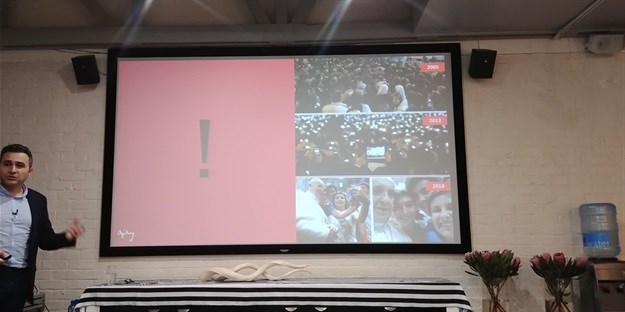Jack Daniel's is the world's most popular brand tattoo, followed by Harley-Davidson. Why? Because they are culturally relevant.
Serge Vaezi, Ogilvy’s chief strategy officer for influence and PR in EMEA says it is worrying how people think about brands. “People say that 94% of brands are not relevant and if they disappeared they would not care. Over the past five years, every year this percentage has increased.”
Advertisers used to pay for us to be entertained – not any longer. For R130 a month (for Netflix) people never have to hear from us again, he adds. “When people stop talking about our brands, then our brands start dying. Consumers are only interested in hearing from us if we are relevant to their lives.”
Public relations and influence-led cultural relevance strategic framework
Brands need to embrace a new approach where their communication is so relevant it overcomes the barriers consumers put up and ensures the audience do not turn away.

Serge Vaezi, Ogilvy’s chief strategy officer for influence and PR in EMEA.
He explains that 18 months ago more and more clients started to come to them saying business, as usual, isn’t working. “They were telling us that while they spent the same amount of money last year or the year before, they were getting fewer results – regardless of the mix of agencies. They did not know how to overcome this.”
To find out more, he says, they examined a number of successful brands. Based on their research, and a little bit of common sense, they developed an approach to help brands overcome the business-as-usual-is-not-working problem, a public relations and influence-led cultural relevance strategic framework.
They have been piloting this approach with customers. “We developed the approach with some clients, American Express, Bacardi and Nescafé, who were kind enough to let us test it with them.”
Audience Data Analytics Model
The essential insight of the cultural relevance philosophy is that for brands to matter, they need to take action and do things people value, not what brands value. “Brands that are able to penetrate culture are seamlessly woven into the fabric of conversation, but to penetrate culture, you have to do culture and foster cultural relevance.”
In conjunction with the cultural relevance framework, Ogilvy has also developed Adam, short for the Audience Data Analytics Model. This is proprietary algorithm identifies important conversations and protagonists based on brand objectives and target audiences to enable brands to reach audiences via influencers who command real engagement. Together with cultural relevance, the two will allow brands to connect with audiences where it matters the most to them,” he says.
Like anything, brand communication is not static, it evolves. In the 1950s the message was “the cleanest wash.” In the 1980s that message became “you are a thoughtful mum.” Then came the era of brand belief in the 2000s (the message would be “dirt is good”) to the era of brand action with the message “help our children play.”
“The way we marketed in the past is not efficient anymore. You want to be the brand that people want tattooed on their bodies if you are to matter in consumers’ lives today, but then you have to be culturally relevant,” he concludes.



































